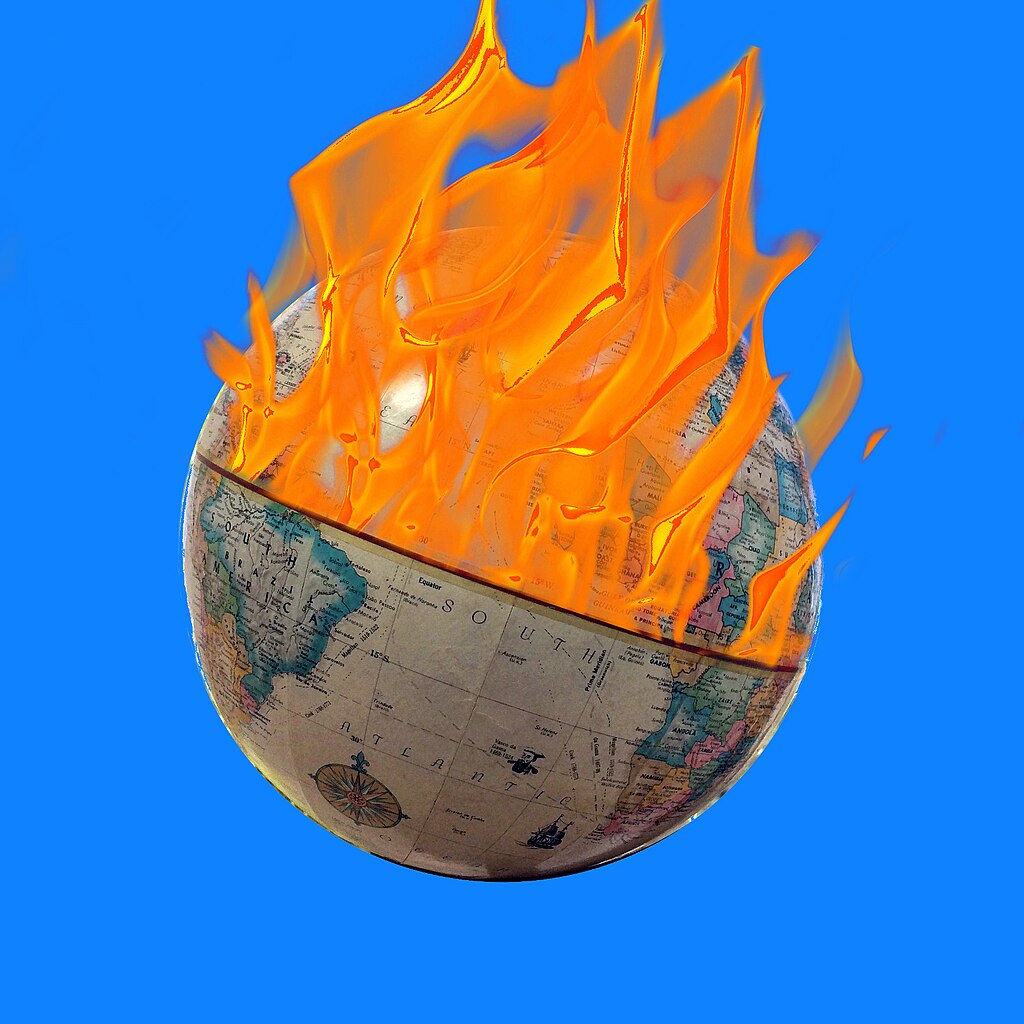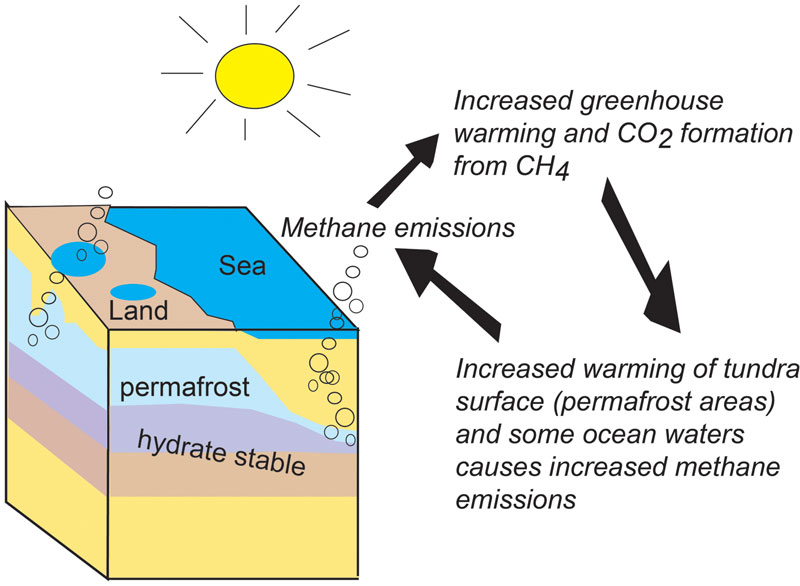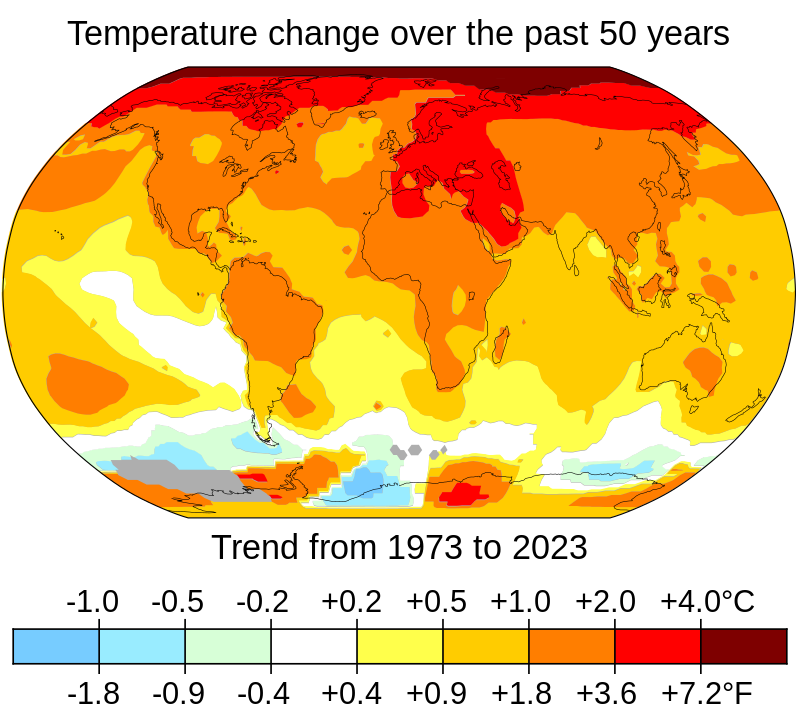
Introduction
Global warming, a term frequently used in climate science and media discussions, refers to the long-term rise in Earth's average surface temperatures. While the notion of global warming is widely recognized, the underlying causes and mechanisms behind this phenomenon are complex and multifaceted. Understanding why global warming happens requires an exploration of natural and human-induced factors, the processes of the Earth's climate system, and the role of greenhouse gases in trapping heat within the atmosphere. In this article, we will delve into the science of global warming, focusing on the causes, consequences, and what is being done to address this pressing global issue.
The Greenhouse Effect: The Primary Cause of Global Warming
At the heart of global warming lies the greenhouse effect, a natural phenomenon that warms the Earth's surface. The Earth receives energy from the sun in the form of sunlight, which passes through the atmosphere and heats the planet's surface. In turn, the Earth emits heat energy in the form of infrared radiation. Some of this heat energy escapes directly into space, but a significant portion is trapped by the gases in the atmosphere. These gases, known as greenhouse gases (GHGs), include carbon dioxide (CO2), methane (CH2), nitrous oxide (N2O), and water vapor. The greenhouse effect helps to keep the Earth's surface temperature within a range suitable for life, as without this effect, the Earth would be too cold to support the ecosystems that thrive today.
The balance between incoming solar radiation and outgoing heat energy determines the Earth's average temperature. However, when the concentration of greenhouse gases increases, more heat is trapped, leading to an overall warming of the planet. The current issue with global warming is that human activities have greatly accelerated the concentration of these gases, causing a significant increase in global temperatures over the past century.
Human Activities Driving Global Warming
While natural factors such as volcanic eruptions and variations in the Earth's orbit can influence the climate, the overwhelming driver of current global warming is human activity. The industrial revolution, which began in the 18th century, marked a turning point in the history of global warming. It introduced widespread use of fossil fuels such as coal, oil, and natural gas to power industries, transportation, and electricity generation. The combustion of these fossil fuels releases large amounts of carbon dioxide into the atmosphere, increasing the greenhouse effect.
Deforestation also plays a critical role in global warming. Trees and other vegetation absorb carbon dioxide through photosynthesis, acting as a natural carbon sink. When forests are cleared for agriculture, urbanization, or logging, this carbon storage capacity is diminished, and the carbon stored in the trees is released back into the atmosphere. This not only reduces the Earth's ability to remove CO2 but also contributes to the increase in greenhouse gases.
Agriculture, particularly livestock farming, is another significant contributor to global warming. Cattle, sheep, and other ruminant animals produce methane, a potent greenhouse gas, as part of their digestive processes. Furthermore, the use of synthetic fertilizers in farming releases nitrous oxide, another powerful greenhouse gas. The expansion of agricultural land and the use of fertilizers and pesticides have compounded the issue, further increasing the amount of heat-trapping gases in the atmosphere.
The Role of Carbon Dioxide
Carbon dioxide (CO2) is by far the most significant greenhouse gas in terms of human contribution to global warming. While CO2 is naturally present in the atmosphere as part of the carbon cycle, human activities have dramatically increased its concentration over the last 150 years. Since the start of the industrial era, CO2 levels have risen from around 280 parts per million (ppm) to over 400 ppm today.
The burning of fossil fuels is the primary source of anthropogenic CO2 emissions. Coal-fired power plants, natural gas burning, and the transportation sector are the main contributors. In addition to direct emissions from burning fossil fuels, deforestation also plays a crucial role in increasing CO2 concentrations. Trees absorb CO2 during photosynthesis, so cutting them down means less CO2 is removed from the atmosphere. Furthermore, when forests are burned, the carbon stored in trees is released as CO2, exacerbating the problem.

Methane: A More Potent Greenhouse Gas
Methane (CH4) is another significant greenhouse gas that contributes to global warming. Though methane is less abundant than CO2 in the atmosphere, it is much more effective at trapping heat, with a global warming potential (GWP) that is over 25 times greater than CO2 over a 100-year period.
Methane emissions primarily come from agricultural activities, particularly livestock farming, where animals like cows and sheep produce methane as part of their digestion. This process, known as enteric fermentation, results in the release of methane into the atmosphere. In addition to agriculture, methane is emitted during the extraction and transportation of fossil fuels, particularly natural gas. Leaks from natural gas infrastructure, oil wells, and coal mining are also significant sources of methane emissions.
Methane is also emitted from landfills, where organic waste decomposes in anaerobic (lack of oxygen) conditions. As waste breaks down, methane is released into the atmosphere. In some cases, methane emissions from landfills can be captured and used as a renewable energy source, but many landfills around the world still lack the infrastructure to reduce these emissions.
Nitrous Oxide and Other Greenhouse Gases
While carbon dioxide and methane are the most significant contributors to global warming, other greenhouse gases, such as nitrous oxide (N2O) and fluorinated gases, also play a role. Nitrous oxide, which has a GWP approximately 298 times that of CO2 over a 100-year period, is primarily emitted through agricultural practices, including the use of nitrogen-based fertilizers. Nitrous oxide is also released during certain industrial processes and from the combustion of fossil fuels.
Fluorinated gases, a group of synthetic gases that include hydrofluorocarbons (HFCs), perfluorocarbons (PFCs), and sulfur hexafluoride (SF6), are produced through industrial processes, refrigeration, and air conditioning systems. These gases have a much higher GWP than CO2 or methane, with some being thousands of times more potent. Although they are present in smaller quantities in the atmosphere, their contribution to global warming is significant due to their potency and long atmospheric lifetimes.
Feedback Mechanisms and Amplifying Effects
In addition to the direct effects of human activity on greenhouse gas concentrations, there are several feedback mechanisms that amplify the effects of global warming. These feedbacks are processes in which a change in one part of the climate system triggers additional changes that further exacerbate global warming.
One of the most notable feedback mechanisms is the ice-albedo feedback. As global temperatures rise, ice and snow at the Earth's poles melt, reducing the amount of reflective surface area (albedo) on the planet. This leads to the absorption of more sunlight, further heating the Earth. The loss of ice also contributes to rising sea levels, as melting glaciers and polar ice caps add water to the oceans.
Another feedback loop involves water vapor. As temperatures rise, more water evaporates from the Earth's surface, increasing the amount of water vapor in the atmosphere. Since water vapor is a potent greenhouse gas, this increase in humidity accelerates the warming process. The more water vapor in the atmosphere, the greater the greenhouse effect, leading to even higher temperatures.
Other feedback mechanisms include changes in vegetation, forest fires, and the release of additional methane from permafrost in the Arctic. As global temperatures rise, permafrost in regions like Siberia and Alaska begins to thaw, releasing large amounts of methane that have been trapped in the frozen ground for millennia. This release of methane further exacerbates global warming, creating a vicious cycle.
Consequences of Global Warming
The consequences of global warming are widespread and have significant implications for ecosystems, human societies, and the global economy. Some of the most noticeable effects of global warming include:
- Rising Sea Levels: As glaciers and polar ice caps melt and thermal expansion occurs in the oceans due to higher temperatures, sea levels are rising. This puts coastal communities and infrastructure at risk of flooding, erosion, and storm surges.
- Extreme Weather Events: Global warming leads to more frequent and intense heatwaves, droughts, hurricanes, and floods. These extreme weather events can disrupt agriculture, damage infrastructure, and lead to the displacement of people.
- Ecosystem Disruptions: Changes in temperature and precipitation patterns can disrupt ecosystems, leading to shifts in biodiversity, habitat loss, and the extinction of vulnerable species. For example, coral reefs, which are highly sensitive to temperature changes, are already experiencing widespread bleaching events due to warmer ocean temperatures.
- Food and Water Security: Changes in climate patterns can affect crop yields, reduce freshwater availability, and increase the frequency of extreme weather events like droughts. This threatens food and water security, particularly in regions that are already vulnerable.
- Health Impacts: Global warming can exacerbate health issues, including heat-related illnesses, the spread of infectious diseases, and air quality problems. Rising temperatures can lead to longer pollen seasons, increasing allergies, and the spread of vector-borne diseases such as malaria and dengue fever.
Mitigation and Adaptation Efforts
Mitigation Strategies
Mitigation efforts include reducing fossil fuel use, transitioning to renewable energy sources such as wind, solar, and hydropower, and improving energy efficiency in buildings, transportation, and industry. Carbon capture and storage (CCS) technologies, which capture CO2 emissions from power plants and industrial processes and store them underground, also offer potential for mitigating global warming.
Other mitigation strategies include reforestation and afforestation efforts to restore carbon sinks and reduce CO2 concentrations in the atmosphere. Shifting agricultural practices to more sustainable methods, such as reducing livestock methane emissions and optimizing fertilizer use, can also reduce the amount of greenhouse gases emitted from the sector.
Adaptation Strategies
Adaptation involves preparing for and responding to the inevitable impacts of climate change. This includes strengthening infrastructure to withstand extreme weather events, developing early warning systems for natural disasters, and improving water management to cope with changing rainfall patterns. Coastal cities may invest in flood defenses, such as sea walls, to protect against rising sea levels.
Countries and communities may also focus on climate-resilient agriculture, adopting crops that are more tolerant to changing conditions such as drought and heat. Education and awareness campaigns are essential in preparing populations for the changing climate and promoting sustainable lifestyles.
Conclusion
Global warming is a complex, multifaceted issue driven primarily by human activities, such as the burning of fossil fuels, deforestation, and agriculture. These actions have led to an increase in greenhouse gases, particularly carbon dioxide and methane, which trap heat in the atmosphere and raise global temperatures. The consequences of global warming are profound, affecting ecosystems, human societies, and economies across the globe.
Mitigating and adapting to the impacts of global warming requires coordinated efforts at the international, national, and local levels. Through the transition to cleaner energy, the reduction of emissions, and the implementation of sustainable practices, we can work toward slowing the pace of global warming and creating a more resilient future for generations to come. However, immediate action is essential to avoid the most catastrophic outcomes and limit the damage already underway.

You can learn these concepts and more at Dr Hock's maths and physics tuition.